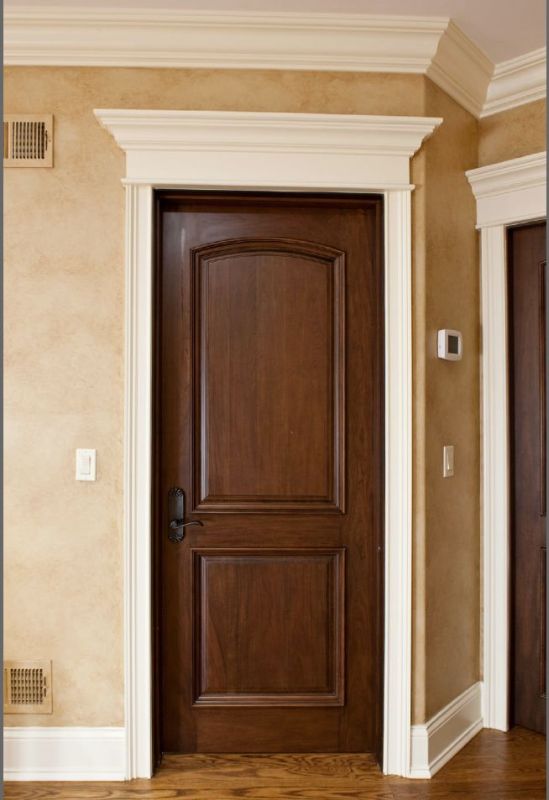Staining Cherry Doors to Match Walnut
Finishers suggest dye, sealer, and stain schedules to make Cherry doors resemble Walnut. October 18, 2012
Question
I have a project that requires staining ten cherry doors a dark walnut color to match the picture below. I want the most efficient method to achieve the best results. Knowing cherry can be splotchy, what are everyone’s thoughts? Can a dye achieve this color (any specific brand and color name suggestions)?
Otherwise, are we looking at a seal coat/condition with a glaze or toner? Again, thoughts on color to match this would be helpful - HVLP or wiped? I have not seen the doors yet so I am not sure of the grain/sapwood issues but they are cherry veneer. I will make a sample before undertaking but suggestions on a staining program to test would be helpful.

Click here for higher quality, full size image
Forum Responses
(Finishing Forum)
From contributor M:
I would strongly recommend that you only use a pigment stain since a dye stain is much more prone to showing splotching. If you try a wash coat or wood conditioner to eliminate the splotching, you will have trouble getting dark enough with your stain. That being said, just go with a dark pigment stain and wipe. Then add pigment to the first clear coat after you seal and sand to tone to your final shade. Sorry if I am being too obvious - no offense intended.
From contributor R:
Well, I don't know what this will start, but I have had the best results with cherry by using a sprayed NGR dye stain on raw cherry (sanded to 150 or 180). I will nearly always dilute the stain I'm using in MeOH, EtOH, Acetone or Naptha. I choose a solvent that will dry quickly and allow me to touch up (adjust) the color and make it even in one "go around". I then seal it to allow further finishing or toning.
From contributor R:
Just to clarify: I dilute the stain so I can achieve the desired color depth in four-five passes. In addition, the door shown in your post has also been toned after staining and sealing.
From contributor J:
To the original questioner: You stated that the doors are cherry veneer. Based on that I would I agree with Contributor R on the NGR dye as a point of departure. I would also cut the intensity of the dye. The most important thing in my opinion, which both Contributor M and the original poster have pointed out is to do this in layers. This will help keep it even and full of depth. Remember you can always go darker.
From contributor K:
Directional hand sanding will greatly reduce splotching. Tape off where overlapping may occur at the joints and then re-tape opposite directions to complete. Pigmented toners can then be sprayed to match the sample.
From contributor G:
Water-based dye stain on raw wood (no wiping), sealer washcoat, and then a wiping stain on top of that. Wiping any stain off of raw cherry or maple causes blotching. Use that washcoat.
